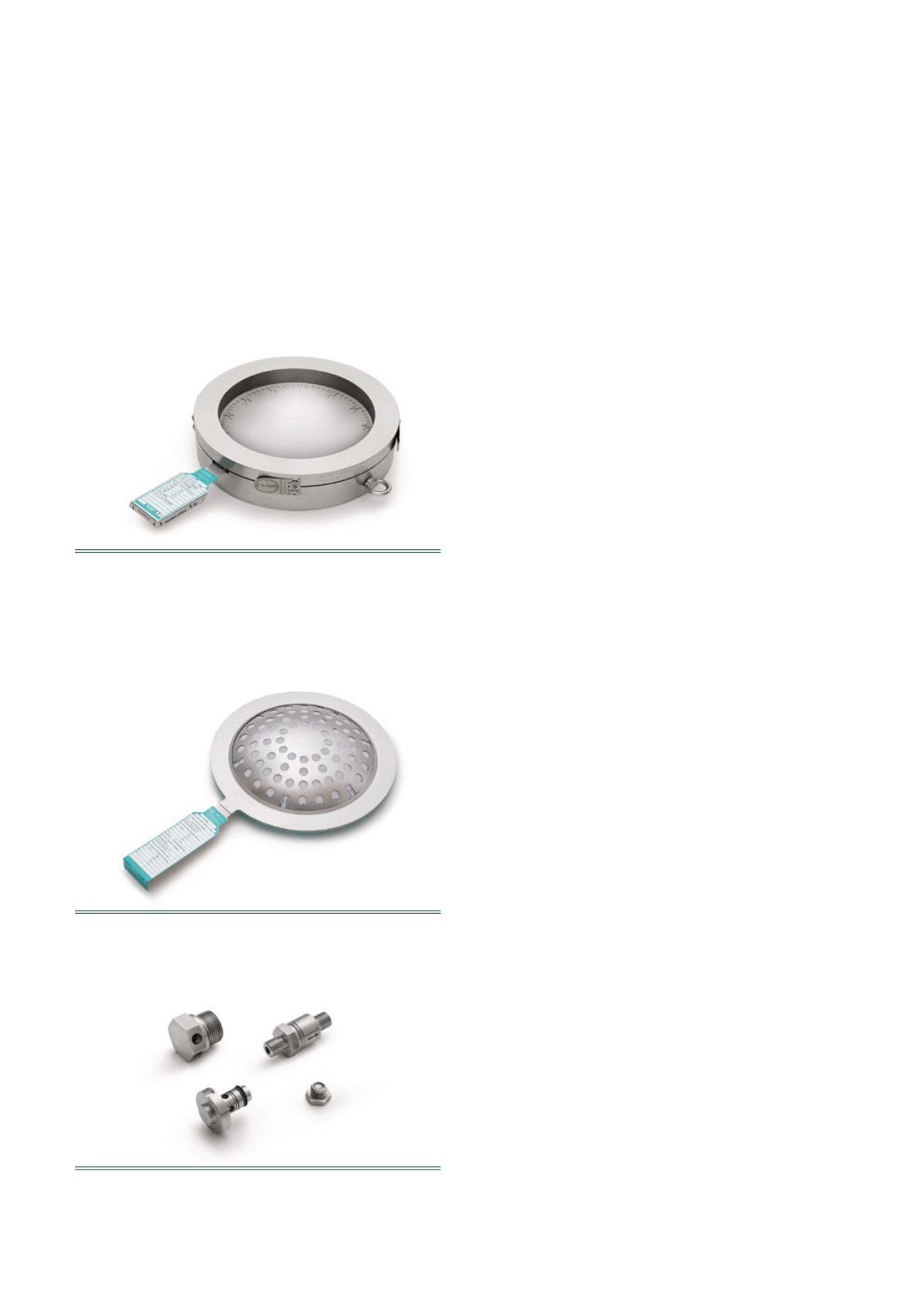
80
| WORLD FERTILIZER |
NOVEMBER 2016
versions, there are also dome-shaped rupture discs, which are
classified into forward-acting (conventional) and pressure-loaded
(reverse-acting) rupture discs. The curvature of the forward-acting
rupture discs is faced away from the process, whereas the
curvature of the reverse-acting rupture discs faces the process.
Depending on the manufacturer, reverse-acting rupture discs
allow higher working pressure conditions, tighter tolerances and
thus a better utilisation of the overall protection system.
Some manufacturers also offer so-called bidirectional
rupture discs, combining the two principles of a rupture disc: in
one direction, the rupture disc acts in the forward (pressure)
direction and in the other direction according to the vacuum.
This allows a response for two differently defined pressure
values in the overpressure and vacuum direction, which allows
for the two types of rupture discs to be simultaneously installed
in a single mounting location.
The highest rupture disc class are customised compact
rupture discs. They are individually manufactured with respect to
geometry, dimensions, connection and burst pressure/vacuum
resistance. The range of available types, for example, includes
welded units, rupture discs for particularly high pressures of
several thousand of bar, and/or for temperatures of several
hundred degrees Celsius. Material such as tantalum can also be
used in processes with critical material.
Advantages of rupture discs
In contrast to electronic and pneumatic control systems, rupture
discs are 100% fail-safe. Installation, operation and maintenance
are relatively simple, and long gone are the times where the
burst pressure could not be accurately defined. High-quality
rupture discs, manufactured with modern machines and
processes, can now be defined with a burst pressure within very
minute tolerances. Working pressures of up to 98% of the
minimum burst pressure are possible.
Further advantages of rupture discs include:
n
n
A better response to sudden pressure increases than
alternative safety devices through faster opening times
(usually <4 msec.) and with a relief through bore of a full
cross-section opening to enable the faster escape of the
unacceptable pressure and flow.
n
n
A 100% isolation of the operating media, with no leakage
before the opening of the rupture disc.
n
n
Rupture discs offer a considerable weight advantage,
especially for larger diameters in comparison to using a valve.
Rupture disc or safety valve?
Rupture discs and safety valves share the same duty: to open at
a defined pressure in order to reduce unacceptable
overpressure or vacuum within a process. While a rupture disc
is a non-closing safety device that must be replaced after it has
triggered, it is fail-safe with predictable operation and
reliability characteristics.
Safety valves close again after the unacceptable pressure has
been relieved, thus, a production line can be restarted without
addressing the root cause of the pressure event. However, the
acquisition, certification and the regular maintenance of safety
valves entails a significant financial and manpower/time effort
to keep them in service.
The answer to the question ‘rupture disc or safety valve?’
often is: rupture disc and safety valve. This is because a rupture
disc helps to eliminate the disadvantages of a safety valve – and
vice versa. The combination of safety valves and rupture discs
enables the use of less costly safety valves made of lower grade
materials protected by the correct rupture disc material, this is
especially important for sticky or corrosive media. Additionally,
the safety valve disassembly and testing can be omitted during the
in-situ
tests, i.e. maintenance and function checks while online.
Safety valves tend to be less tight after their initial triggering
and usually require removal and re-certification. The rupture disc,
which is installed upstream from the safety valve, ensures
isolation of the safety valve until its set pressure – an essential
factor for the operator due to prevailing regulations, laws and
directives to reduce leakage and rogue emissions. The exchange
of a rupture disc is much less expensive compared to that of a
safety valve maintenance/re-certification requirement.
Figure 2.
Bidirectional rupture discs combine the
functions of two different discs and are therefore often an
economical solution.
Figure 1.
KUB (displayed with a holder) – a known
version of reverse-acting rupture discs – developed
and manufactured in Germany. The visible buckling bars
(predetermined breaking points) are faced away from the
process, thus ensuring a precise opening behaviour even
with sticky or corrosive media.
Figure 3.
Compact rupture discs can be produced
in various geometries and with a wide variety of
specifications.


